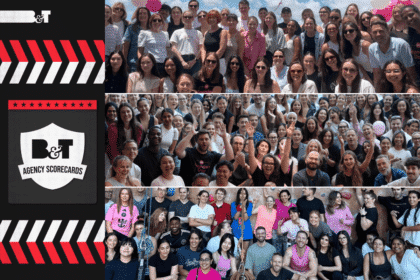In this guest post, Daniel Littlepage (pictured below), Aussie MD of 90 Seconds, talks us through tips to make content that people actually want to consume…
According to Youtube a massive 300 hours of video are uploaded every minute. Snapchat and Facebook account for 14 billion video views every day[1]. And if those numbers don’t seem crazy enough, it’s predicted that by 2019, 80 percent of all internet traffic will be video[2].
Consumer appetite for online video is growing rapidly across the world, and with this growth comes new challenges for brands and combined marketers as they work online video into their marketing plans. One of these challenges is how to localise video content effectively across regions.
We’ve heard for years that content is king, but without localising content effectively brands risk return on the investment. If you’re a brand that’s trying to stretch its video content across multiple markets, it’s important to design your content from the earliest stages for it to transition to other cultures and not lose its impact. When localisation is done correctly, a video can be as engaging and entertaining in a new culture as it was in its original one.
If you’re producing content that you want to multi-purpose to suit different audiences, considering the following will help ensure your localisation approach delivers effective and engaging results.
- Social is local
When it comes to marketing, many brands still focus on producing global content and don’t see the importance of local activation. However, when followers/fans can see a connection between their life situation and your brand, their interest increases. Context and cultural understanding is crucial in getting the right message to the right audience and in the right way. So make sure you consider the channel you will distribute your video content on.
- The impact of different languages
English requires fewer words to communicate a message than most other languages do. This can have a significant impact when translating from English into another language as you have to take into consideration that the spoken and written elements will be longer than the original English.
- Synchronised vs Non-Synchronised Dubbing
The most basic form of voiceover is non-synchronised dubbing. In this process, the original language spoken is removed from the video and replaced with the language you are translating into. Although some attempt to synchronise the lip and mouth movement may occur, this form of dubbing is often of poor quality. In contrast synchronised dubbing attempts to sync word choices and the voiceover itself with the original actor’s lip movement.
The type of voiceover you choose might depend on your budget. Dubbing can be as much as 15 times costlier than subtitling, especially when attempting highly synchronised dubbing.
However, videos spoken in a native language can be very attractive to a potential audience so brands need to weigh up the investment.
- Music is often very culture-specific
Video localisation is not limited to spoken audio. If there is music within the video, you will most likely want to replace that as well. Music is often very culture-centric and has less of an impact when introduced into foreign cultures. In addition to changing the voiceover audio, you will want to use music that is culturally applicable and evokes the type of mood you desire. Choosing good music does not mean just choosing music common to a target culture, but one that evokes the emotions you want your audience to feel when watching the video.
Keep in mind, however, that not all brands are opting to localise; many are starting to invest in creating more local content. Uber recently shot a TVC in 36 locations, across eight countries to ensure customers in Paris, Stockholm, Amsterdam, Berlin, Madrid, Edinburgh, Warsaw and Brussels saw recognisable local landmarks. In less than 12 days, Uber produced near-identical videos localised for each market by shooting in multiple locations, that were then edited centrally through the 90 Seconds cloud platform to streamline costs. This meant Uber could ensure consistency of branding and quality without the cost of hiring production teams in every market around the globe.
In 2016, content localisation can no longer be an afterthought. Consumers are demanding personalised marketing and localised content. The good news is this no longer needs to be overly time-consuming or expensive. With cloud solutions there are more options available to brands than ever before when localising video.









